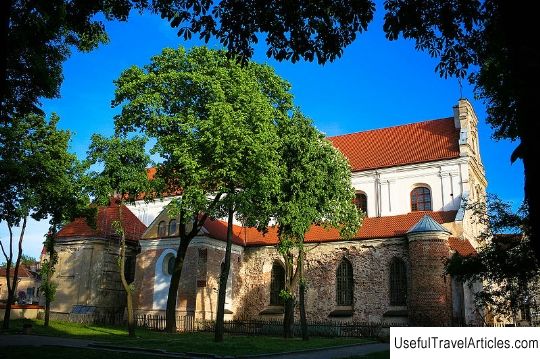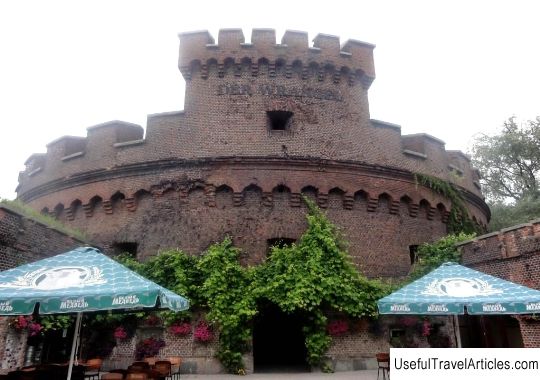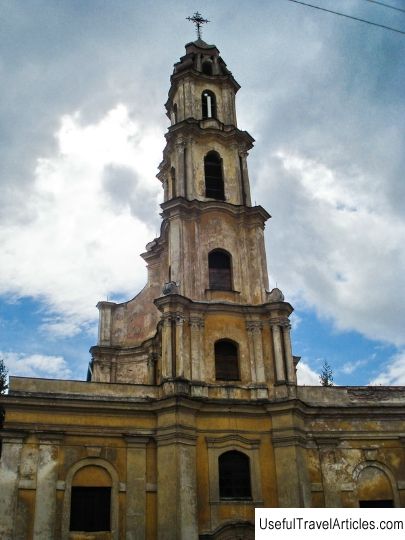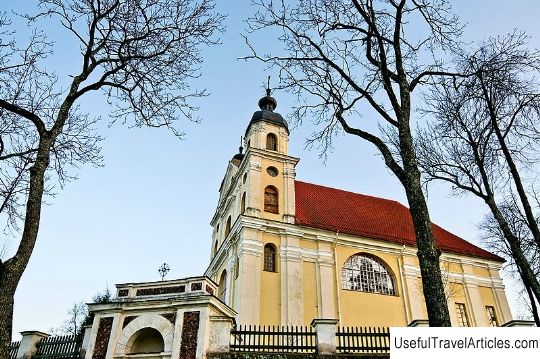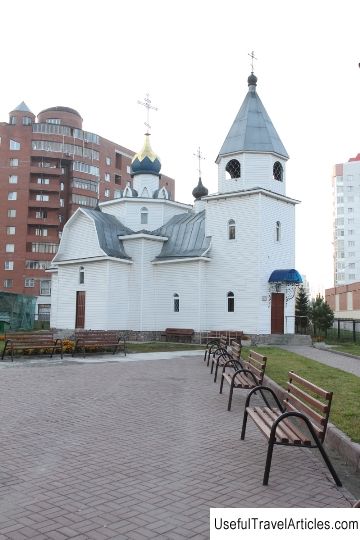Church of St. John (Sv. Jonu baznycia) description and photos - Lithuania: Vilnius
Rating: 7,6/10 (2034 votes) 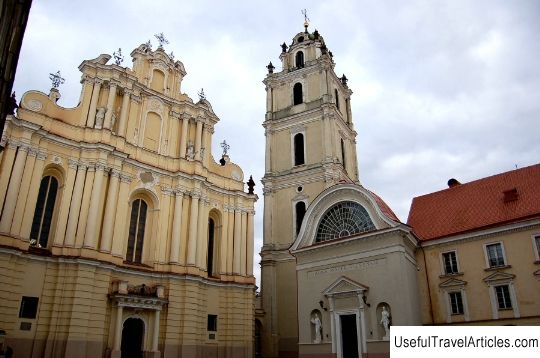
Church of St. John (Sv. Jonu baznycia) description and photos - Lithuania: Vilnius. Detailed information about the attraction. Description, photographs and a map showing the nearest significant objects. The name in English is Sv. Jonu baznycia. Photo and descriptionThe ensemble of Vilnius University includes a monument of late Baroque architecture - the Church of St. John the Baptist and St. John the Evangelist. The construction of the temple began in 1387. After the baptism of Lithuania, Jagailo ordered to build a wooden church on the old market square in the city center. And soon a stone church was erected on the site of the wooden one, which was consecrated in 1427. After the fires, the church was repaired for three years from 1530, and in the 16th century the church of St. Ioannov fell into decay and was handed over to the Jesuits as a gift from King Sigismund Augustus. In 1571 the Jesuits carried out a major overhaul. As a result of the reconstruction, the building was extended by almost a third; after the reconstruction, the capacity of the temple increased to 2300 people, and the building itself acquired features and acquired features of the Renaissance. At the end of the 16th and beginning of the 17th centuries, a bell tower was built next to the temple, crypts, chapels and utility rooms were arranged in the temple itself. In those days, solemn events, holidays and receptions of kings were held in the church. The temple underwent the biggest changes when it was rebuilt after the fire of 1737. The restoration project was developed by Johann Glaubitz, during the work new vaults were erected, a large altar was erected, choir stalls and an organ were installed, the main facade and pediment of the presbytery were decorated. In 1773, upon the abolition of the Jesuit order, the temple was transferred to the Vilna school. A thorough alteration of the interior of the church was carried out by order of the authorities of the Vilnius University, which lasted for several years and lasted from 1826 to 1829. After the closure of the university in 1832, the church was transferred to the Medical-Surgical Academy and became known as the Academic Church of St. John. And after the closure of the academy, the church was left without an owner and became an independent parish. After the Second World War, the church was used as a warehouse for the communist newspaper "Tesa". After restoration in the mid-1960s, St. Ioannov was transferred to Vilnius State University, and a science museum was set up there. With the change of the state system, the church was returned to the Catholic Church and consecrated again in 1991. The main facade of the church, facing the large university courtyard, is considered to be one of the most original works of the late Baroque. The basis of the facade composition is the harmonious rhythm of vertical and horizontal elements with the complication of the form towards the top. The main facade is conventionally divided into four parts by wide wavy lines of a complex profile. The entrance portal is decorated with two columns designed to support the decorative balcony. The lower tier is modestly decorated with rustic wood, the second tier is distinguished by splendor of decoration. Three narrow and high windows are placed in niches. On the third tier, between the columns, there are figures of John the Baptist, the Evangelist John, Saint Ignatius and Saint Xavier, made by the sculptor Godel. The upper tier is decorated with bas-reliefs, openwork vases and a forged metal cross, sculptural details. The baroque pediment of the eastern facade is designed in the same style. On the outer wall of the presbytery there is a large memorial table of the Khreptovich family. The eastern facade is decorated with a fresco depicting scenes of the plague epidemic. The interior of the temple has retained its Gothic solemnity. The altar is an ensemble of 10 altars, located not only in different levels, but also in different planes. The main altar is located between the columns, which have sculptures of John Chrysostom, St. Augustine, Pope Gregory the Great, and St. Anselm. The ensemble of altars is rightfully considered a unique masterpiece of art. Eighteen plaster figures are installed by two at the column in the central nave of the temple, 12 of them are figures of saints. The vaults of the central nave are decorated with frescoes, which were painted over during the reconstruction in 1820. Seven side chapels have survived, one of which is the mausoleum of the Oginsky magnates. Several memorial plates, busts and monuments are installed in the church. The first organ was installed in 1590. In 1729-1735, new choirs and another organ were re-installed, burned down in a fire in 1737. And in 1839, a new organ was installed for 22 registers of the work of the Konigsberg master Casparini. At the moment, the restored organ with 65 voices and 3600 pipes is considered the largest organ in Lithuania.         We also recommend reading Assumption Cathedral of the Trinity-Sergius Lavra description and photo - Russia - Golden Ring: Sergiev Posad Topic: Church of St. John (Sv. Jonu baznycia) description and photos - Lithuania: Vilnius. |
